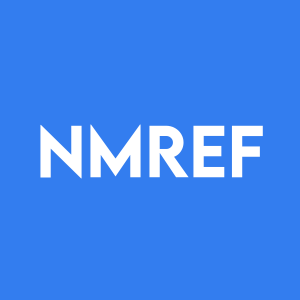Namibia Critical Metals Inc. Announces Positive Preliminary Economic Assessment for the Significantly Expanded Lofdal Heavy Rare Earth Project “2B-4” With $632.7 Million Pre-Tax NPV
Rhea-AI Summary
Namibia Critical Metals has released a Preliminary Economic Assessment (PEA) for its Lofdal Heavy Rare Earth Project, reporting a pre-tax NPV of $632.7 million and an internal rate of return (IRR) of 34%. The project, featuring a simplified processing flow and significant potential for dysprosium and terbium production, aims for an annual throughput of 2 million tonnes. Key figures include a planned capital cost of $207 million and a payback period of 3.2 years. The PEA is based on only 50% of the current resource estimate, suggesting significant upside potential as exploration continues.
Positive
- Pre-tax NPV of $632.7 million.
- Internal rate of return (IRR) of 34% pre-tax.
- Projected nominal cash flow of $1.1 billion pre-tax over a 16-year mine life.
- Initial capital costs estimated at $207 million, with a payback period of only 3.2 years.
Negative
- The PEA is based on inferred mineral resources, which are not guaranteed to be economically viable.
- No certainty that the preliminary economic assessment will be fully realized.
- Only 50% of the current mineral resource estimate was utilized in the PEA, indicating potential limitations.
News Market Reaction 1 Alert
On the day this news was published, NMREF gained 20.88%, reflecting a significant positive market reaction.
Data tracked by StockTitan Argus on the day of publication.
HALIFAX, NS / ACCESSWIRE / October 3, 2022 / Namibia Critical Metals Inc. ("Namibia Critical Metals" or the "Company" or "NMI") (TSXV:NMI)(OTC Pink:NMREF) is pleased to announce the results of its Preliminary Economic Assessment ("PEA") for the Lofdal Heavy Rare Earth Project "2B-4" ("Lofdal" or the "Project") in Namibia. This PEA aims at a significantly larger annual run-of-mine and plant throughput of 2 million tonnes per year and longer mine life than the historical PEA of 2014 by mining from two sub-deposits namely "Pit 2B" and "Pit 4". Further, the processing flow sheet was simplified to a direct flotation of the run-of-mine material and expanded to include a hydrometallurgical unit producing a >
The Lofdal deposit has the potential for significant production of dysprosium and terbium, two of the most valuable heavy rare earth elements. The Project is being developed in joint venture with Japan Oil, Gas and Metals National Corporation ("JOGMEC") targeting a long term, sustainable supply of heavy rare earths to Japan.
Highlights:
- Net Present Value - NPV (5) of
$632.7 Million USD (pre-tax) and$391 Million USD after-tax - Internal Rate of Return (IRR) -
34% pre-tax and28% after tax - Life of mine nominal cash flow of
$1.1 billion pre-tax,$698.7 million after-tax - Initial Capital Costs -
$207 Million USD including a30% contingency - Capital Payback Period - 3.2 years after-tax
- Approximate Average Annual Production - 2,000 tonnes TREO including 117 tonnes Dysprosium and 17.5 tonnes Terbium
- PEA is based on mining of only 26 million tonnes resource or about
50% of the 53 million tonnes in the Mineral Resource Estimate issued in June 2021 - Estimated 16-year mine life with 13 million tonnes of low-grade stockpile likely expanding the life of mine
- The price for Rare Earth Oxides used: Dysprosium oxide USD
$587 /kg and Terbium oxide USD$2,493 /kg. - Average basket price of USD
$91 /kg including third party separation costs
Cautionary Note: The preliminary economic assessment is preliminary in nature and includes inferred mineral resources that are considered too speculative geologically to have the economic considerations applied to them to enable them to be categorized as mineral reserves and there is no certainty that the preliminary economic assessment will be realized. Mineral resources that are not mineral reserves do not have a demonstrated economic viability
Darrin Campbell, President of Namibia Critical Metals stated:
"This is a major step forward in establishing Lofdal as a world-class heavy rare project and a globally significant potential supplier of Dysprosium and Terbium, the two most valuable rare earth metals. This strong economic analysis supports the continued rapid development of Lofdal and we are moving forward with the next steps including Pre-Feasibility Study of this extended mining operation over the next few months. This robust economic assessment is only on
Lofdal deposit
The Lofdal Heavy Rare Earths deposit represents a district-scale (20 km x 10 km) heavy rare earth element (HREE) mineralisation in subvolcanic hydrothermal alteration zones. While high grade zones (>
In order to develop the Lofdal project into a long-term producer of HREE, the Company focussed recent processing test work on cost-efficient technologies to upgrade lower grade material aiming at effects of economy of scale in a potential large-scale mining operation.
The Company mined a total of 34,500 tonnes of mineralised material from a starter pit in the central Area 4 deposit in October 2021 (Press release 29 November 2021). A 500 tonne sample was taken from the mineralized zone at a depth between 12 and 15 metres in order to minimize effects of surface related oxidation. The material was blended to provide homogenized samples which are representative of the wider deposit at a grade of about
Summary of Mining Results
The proposed mining method is conventional open pit mining. Mineralised rock and waste would be drilled, blasted, loaded by hydraulic shovels and hydraulic excavators into off-highway dump trucks, and hauled to the processing plant. The basis for the pit design work was the mineral resource block model that was developed by MSA as part of Mineral Resource Estimate (see NI-43-101 Technical Report and press release dated June 30,2021).
The proposed mining method is the development of a slot in front of the mineralised zone at each level. The centralized slot will enable waste mining on one side while mining mineralised material on the other side. This methodology will also facilitate separating mineralised material from waste material. The target ROM feed to the processing plant is 2,000,000 tonnes per annum. The plant feed is mineralised material with a TREO >=
The combined Life of Mine of the two pits is 16 years. Due to the nature of the deposit, the resultant pits are narrow and deep. No backfilling is contemplated.
An assumed maximum pit slope angle of 63° is applied to all slopes other than the low wall side, which follows the orebody and is at approximately 50°. With the inclusion of the ramp system the overall highwall slope in Pit 4 is approximately 55°.
During the PFS stage, a switch to underground mining will be considered for more cost-efficient mining of the lower levels in the current pit shell as well as to expand mining towards deeper parts of the resource.
Summary of Processing Results
Flotation test program
The metallurgical bulk sample test program was amended to include flotation tests directly on the fresh, low-grade sample, by-passing initially planned XRT and XRF sorting which would result in additional losses. Iron removal by magnetic separation was moved to post flotation on a smaller concentrate stream reducing CAPEX and OPEX with minimal losses.
Flotation test work was carried out at SGS Canada Inc. in Lakefield, Ontario, and at UVR-FIA GmbH in Freiberg, Germany. Both institutions, cumulatively conducted over 120 individual flotation tests using several types of collectors, depressants and considered thrifting of physical flotation conditions.
The impact of high intensity conditioning ahead of flotation yielded clearly improved flotation performance.
Best flotation results in regard to upgrade, recoveries and operating costs were achieved using moderate dosages of the collector Florrea 3900 and Calgon as depressant. Cleaner flotation concentrates from positive test runs produced at an overall mass pull of 2.7
After defining the optimal flotation conditions, bulk flotation tests were conducted in quadruplicate to produce a flotation concentrate for downstream hydrometallurgical testing. Four bulk flotation tests demonstrated repeatable flotation performances on the low-grade feed material.
Significant upside potential also remains in further optimizing flotation conditions.
Hydrometallurgical test work and results
The mineral concentrate produced by bulk flotation was used for downstream hydrometallurgical testing. Four bulk flotation tests demonstrated repeatable flotation performances on the low grade direct run-of-mine feed material. The cleaner flotation from the bulk test runs produced a concentrate grade TREO ranging from 4.7 -
A total of three acid bake and water leach tests were completed throughout the current test program to investigate the dissolution of rare earth elements (REE) and the behaviour of gangue minerals through the addition of sulphuric acid at elevated temperatures (300°C) and at a range of acid dosages (1-1.5 t/t concentrate basis). Under previously determined optimum conditions (2021 test program at SGS Canada), these tests showed very good REE recoveries with
Results of the impurity removal and crude REE precipitation tests on the leached solutions corroborated chemistries with the previous test programs on the two flotation concentrates with low co-precipitation of RE's in the impurity removal stage (between 1
The addition of a hydrometallurgical plant at Lofdal would create further jobs in the southern Kunene Region of Namibia and provide a marketable product for export. The rare earth oxalate product with thorium and uranium levels below 3 ppm would be acceptable for import into Japan without restrictions or penalties.
| Table 6 - Total Capital Costs Summary (US$) | ||
| Direct Mining Costs1 | - | |
| Direct Mine Site Processing Costs | 117,577,231 | |
| Direct Tailings Storage Facility Costs | 13,628,361 | |
| SUB TOTAL INITIAL CAPITAL COSTS | 131,205,593 | |
| Sustaining Capital Mining | - | |
| Sustaining Capital Processing | 6,010,090 | |
| Sustaining Capital Tailings Storage Facility | 5,432,266 | |
| Mine Closure Costs | 5,000,000 | |
| Indirect Costs | 18,560,082 | |
| Contingency | 40,873,816 | |
| TOTAL CAPITAL COSTS | 207,081,846 |
1Mining will be conducted via contractor, all contractor capital recovery is reflected in the mining operating costs.
Market Analysis - Pricing
A price deck has been developed for the Lofdal project based on an internal review of pricing as well as peer reports (Mkango Resources LTD DFS July, 2022, and Search Minerals PEA June, 2022) which in turn were developed based on third party independent market forecast analysis.
The projected REO distribution for Lofdal concentrates is also presented in Table 7. The projected basket price is US
| Table 7 - Pricing US$/Kg | ||||
| Pricing Forecast for REE | Pricing Used for Analysis | Distribution | ||
| La2O3 | $ - | |||
| Ce2O3 | $ - | |||
| Pr2O3 | ||||
| Nd2O3 | ||||
| Sm2O3 | ||||
| Eu2O3 | ||||
| Gd2O3 | ||||
| Tb2O3 | ||||
| Dy2O3 | ||||
| Ho2O3 | ||||
| Er2O3 | ||||
| Yb2O3 | ||||
| Lu2O3 | ||||
| Y2O3 | ||||
| Tm2O3 | ||||
| Average Basket Value1 | ||||
1Pricing used before refining charges of
Economic Analysis
The economic analysis assumes that the Project will be
Mining and treatment data, capital cost estimates and operating cost estimates have been put into a base case financial model to calculate the IRR and NPV based on calculated Project after tax cash flows. The scope of the financial model has been restricted to the Project level and as such, the effects of interest charges and financing have been excluded.
For the purposes of the PEA, the evaluation is based on
At a discount rate of
The Project is expected to pay back initial capital within the first 3.2 years.
Sensitivity Analysis
Pre Tax NPV at Range of Operating Costs | |||||||||
| Discount | |||||||||
Pre-Tax NPV At Range of Capital Costs | |||||||||
| Discount | |||||||||
Pre-Tax NPV at Basket Price Levels | |||||||||
| Discount | |||||||||
Pre-Tax NPV at Varying Recovery Ranges | |||||||||
| Discount | |||||||||
Recommendations
This PEA was based on the Mineral Resource Estimate produced by The MSA Group in 2021. Significant upside potential exists down dip of Area 4 and Area 2B as well as along the several kilometer long strike extensions of the mineralization in Areas 2 and 5. Therefore, with further exploration the run-of-mine and/or life time of the Lofdal mine could be significantly increased.
Sorting of the run-of-mine material was excluded from this PEA. However, historical and recent test work at TOMRA showed several approaches for an optimization of the Lofdal mine. Further studies will focus on three run-of-mine streams which will entail (1) higher grade material directly supplied to the flotation circuit while (2) lower grade material will run through a low filter XRT sorting with an upgrade factor expected in the range 2.0-2.5, and (3) very low grade (stockpile) material which will be XRT sorted with a high filter aiming at upgrades factors in the range 3.5-4 with relatively low recoveries around
While completing this PEA, further flotation tests are continuing at SGS aiming at further optimization of flotation. Specifically, grind size and collector dosage optimization bears significant upside for better recoveries and lower OPEX.
QUALIFIED PERSONS AND 43-101 TECHNICAL REPORT
A NI 43-101 compliant report entitled Preliminary Economic Assessment on the Lofdal Heavy Rare Earths 2B-4 Project, Namibia ("the Report") will be filed on SEDAR within 45 days. SGS Canada Inc. is the principal author under the supervision of Michael Archer who is a Qualified Person in accordance with NI 43-101 - Standards of Disclosure for Mineral Projects.
Sections of the Report dealing with property description and location, accessibility, climate, local resources, infrastructure and physiography, history, geological setting and mineralisation, deposit types, exploration, drilling, sample preparation, analyses and security and data verification were completed by The MSA Group under the supervision of Jeremy Witley, (BSc Hons, MSc (Eng.)) and Swinden Geoscience Consultants under the supervision of Scott Swinden, (Ph.D P.Geo), who are Qualified Persons in accordance with NI 43-101 - standards of disclosure for mineral projects.
The section of the Report dealing with mineral resource estimates was completed by The MSA Group under the supervision of Jeremy Witley, (BSc Hons, MSc (Eng.))
Sections of the Report, dealing with mining methods and mine capital and operating costs were completed by SGS Canada under the supervision of Bill van Breugel (BaSc Hons, P.Eng.) who is a Qualified Person in accordance with NI 43-101 - Standards of Disclosure for Mineral Projects.
Sections of the Report, dealing with mining design and schedules were completed by BBMC RSA under the supervision of Johann Hager (BEng Hons, MEng Mining, P.Eng.) who is a Qualified Person in accordance with NI 43-101 - Standards of Disclosure for Mineral Projects.
Each of Michael Archer, Jeremy Witley, Scott Swinden, Johann Hager and Bill van Breugel have reviewed and approved the technical disclosure in this press release.
Rainer Ellmies, PhD, MScGeol, EurGeol, AusIMM and Vice President of Namibia Critical Metals Inc., is the Company's Qualified Person and has reviewed and approved the geological data in this press release.
About Namibia Critical Metals Inc.
Namibia Critical Metals Inc. holds a diversified portfolio of exploration and advanced stage projects in Namibia focused on the development of sustainable and ethical sources of metals for the battery, electric vehicle and associated industries. The two advanced stage projects in the portfolio are Lofdal and Epembe. The Company also holds significant land positions in areas favourable for gold mineralization.
Heavy Rare Earths: The Lofdal Dysprosium-Terbium Project is the Company's most advanced project being fully permitted with a Mining Licence (ML 200) issued in 2021. The project is being developed in joint venture with Japan Oil, Gas and Metals National Corporation ("JOGMEC").
About Japan Oil, Gas and Metals National Corporation (JOGMEC) and the JV
JOGMEC is a Japanese government independent administrative agency which seeks to secure stable resource supplies for Japan. JOGMEC has a strong reputation as a long term, strategic partner in mineral projects globally. JOGMEC facilitates opportunities with Japanese private companies to secure supplies of natural resources for the benefit of the country's economic development.
Rare earths are of critical importance to Japanese industrial interests and JOGMEC has extensive experience with all aspects of the sector. JOGMEC provided Lynas with US
Namibia Critical Metals owns a
Other exploration projects: The Company's Exclusive Prospecting Licenses ("EPLs") prospective for gold are located in the Central Namibian Gold Belt which hosts a number of significant orogenic gold deposits including the Navachab Gold Mine, the Otjikoto Gold Mine and more recently the discovery of the Twin Hills deposit. At the Erongo Gold Project, stratigraphic equivalents to the meta-sediments hosting the recent Osino gold discovery at Twin Hills have been identified and exploration is progressing over this highly prospective area. The Grootfontein Base Metal and Gold Project has potential for magmatic copper-nickel mineralization, Mississippi Valley-type zinc-lead-vanadium mineralization and Otjikoto-style gold mineralization. Interpretation of geophysical data and regional geochemical soil sampling have identified first gold targets.
The common shares of Namibia Critical Metals Inc. trade on the TSX Venture Exchange under the symbol "NMI".
Neither the TSX Venture Exchange nor its Regulation Services Provider (as that term is defined in the policies of the TSX Venture Exchange) accepts responsibility for the adequacy or accuracy of this release.
For more information please contact -
Namibia Critical Metals Inc.
Darrin Campbell, President
Tel: +01 (902) 835-8760
Email: Info@NamibiaCMI.com
Web site: www.NamibiaCriticalMetals.com
The foregoing information may contain forward-looking information relating to the future performance of Namibia Critical Metals Inc. forward-looking information, specifically, that concerning future performance, is subject to certain risks and uncertainties, and actual results may differ materially. These risks and uncertainties are detailed from time to time in the Company's filings with the appropriate securities commissions.
SOURCE: Namibia Critical Metals Inc.
View source version on accesswire.com:
https://www.accesswire.com/718478/Namibia-Critical-Metals-Inc-Announces-Positive-Preliminary-Economic-Assessment-for-the-Significantly-Expanded-Lofdal-Heavy-Rare-Earth-Project-2B-4-With-6327-Million-Pre-Tax-NPV








